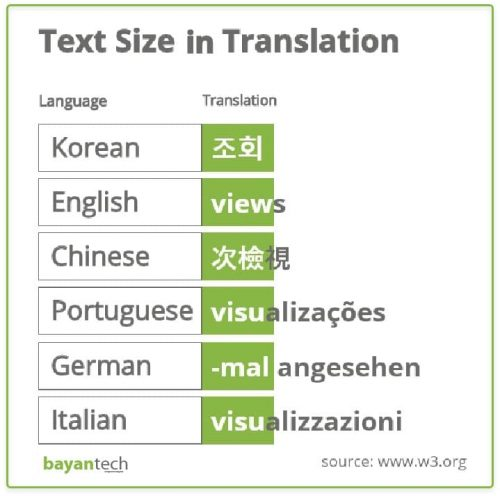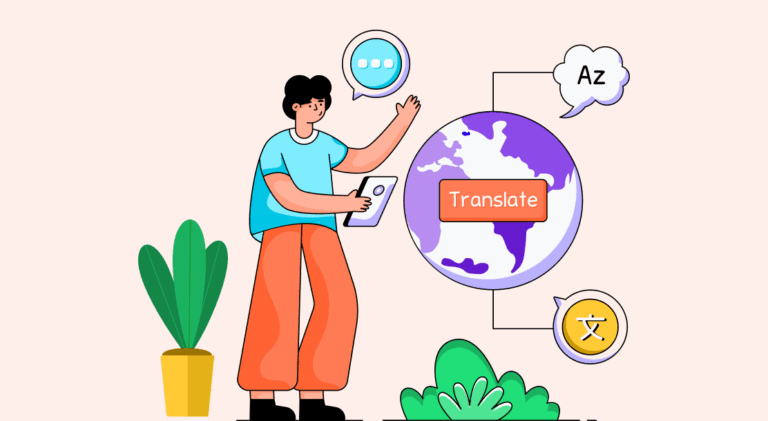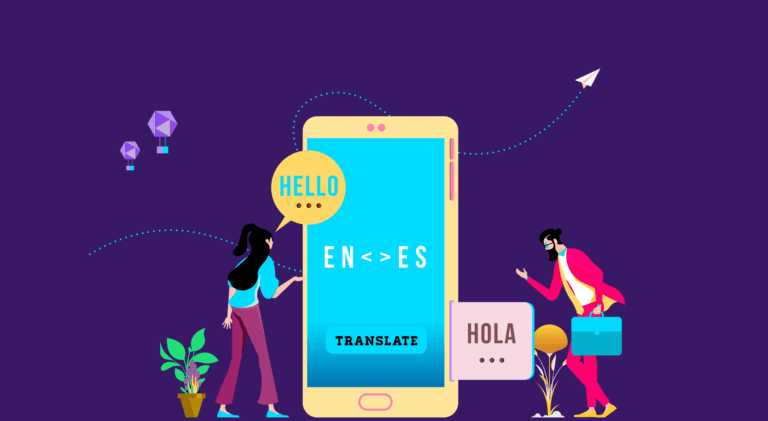How To Manage Text Expansion And Contraction In Translation

When you attempt localizing content, there are several factors to consider, like the local culture, language nuances, etc. More important than that is the length of the target text, which may either increase or decrease drastically. Text expansion comes into play in such scenarios, and you need a text expander to handle such translation tasks.
That is why your best-crafted plans, including a great design, an attractive interface, engaging social media posts, etc., fail when your content is not localized correctly. To complete your job perfectly, you may have to seek text expansion or text contraction services.
What is Text Expansion in Translation?
Some target languages you translate may take more space than the source language. Several languages take two words to convey what the source language conveys in one word. This may be due to the differences in grammar, sentence structure, etc., in the target languages.
Typically, you can see examples when you translate from English into German, where the same English word, when translated into German, may take long words that take up more space. This is known as text expansion in translation, for which you need to use a text expander. Text expansion space requirements may vary from language to language.
Text contraction, on the other hand, may occur when you translate from the source language to the target language, which may take fewer words to convey the same message. A good example is translating from English to Danish, where the translated text takes up less space. In such cases, you need contraction services or translation experts providing such services.

How to Predict Text Expansion and Contraction?
Text expansion rates may vary, and when you translate from English to languages like Spanish, Italian, or French, there could be up to 25% expansion. When a language like German is the target language, the expansion rate may go as high as 35%. Conversely, translating from English into Chinese, Korean, or Japanese is likely to contract, with a significant fluctuation in percentages.
Although these languages contract, the challenge they pose is by way of complex characters that may not be present in an ancient language like Latin, where additional space between the characters may be required.
As unpredictability is unpredictable, there is no set formula to adopt, as the contraction/expansion percentage can vary with every pair of languages you translate from and into.
Literary translations probably pose the most difficult challenge as they expand much more than technical translations or legal documents. Smaller documents, like letters or notes, have a much lower rate of expansion/contraction. Also, the target language’s grammar, syntax, writing style, sentence structure, terminology, word usage, and tone may cause an increase in the expansion/contraction rate.

Text Expansion in Translation Services
English text serves as a standard for translators and designers, and they use it as a proxy or placeholder as it is a compact language, though text expansion is a part of most translation jobs. Most Eastern languages need at least 25% more space, while some need at least 35% more space when written, compared to English.
Spanish is one of the most complex languages as far as translation is concerned, provision for text expansion has to be given by default, and text expanders are also part of the process.
Also, most English abbreviations cannot be translated, per se, into other languages. For instance, frequently asked questions, abbreviated FAQs becomes preguntas freceuntes in Spanish. In this case, text expansion is essential, as the translation takes up much more space than FAQ.
The same is true while translating English into German, though not for the same phrase. That is why experienced translators search for a reliable text expander online before taking up translation works in such languages.
Considering translating into Asian languages like Chinese and Japanese, the other side of the coin presents new challenges. Such Asian languages often use ideograms, and a single character can represent a word, phrase, or concept with no spaces in between. It is where a translator encounters text contraction in word count and text expansion in text height. There is no doubt that even a seasoned translator will need the best text expander and contractor when taking up translation tasks from English into most Asian languages.

Common Issues Translators Face in Text Expansion
Marketers and translators face sudden challenges when an unexpected text expansion needs crops up. However, designers, copywriters, and translators face issues other than text expansion or contraction, like:
Abbreviations
As mentioned earlier, abbreviations in English are not applied universally and pose challenges in other languages. Using abbreviations can throw design and translation challenges because they are difficult to translate well.
For instance, abbreviations are not found in Middle-Eastern languages like Arabic because abbreviating a phrase changes the meaning completely. Therefore, translators must consider that while translating English abbreviations into Asian languages, they must consider translating the entire word or phrase rather than just two or three letters. Of course, the meaning must be hyper-localized to suit a target audience.
Compound Nouns
The German language poses a unique challenge to translators: It generally combines a few small words to form a long phrase. It throws a challenge to the designers because while it is easy for them to split a sentence into many lines, the same does not apply to a single word, namely a Noun.
Font
Languages like Japanese, Chinese, and Arabic, which do not have Latin as the base, need to essentially use different fonts from those found in English, French, and Spanish. This can affect the typesetting pattern, leading to complications.
Text Height
Most Asian languages, including Arabic, Chinese, Korean, Thai, and Japanese, take up more vertical space to offer better clarity. All Asian languages include several complex characters, which is not the case with English. Text expansion is a critical factor to take into account for designers and translators while translating from English into any of the Asian languages. The same text and characters in English can take up more space when translated into Asian languages.
Text Width
Again, when compared to Latin-based languages, Asian languages like Chinese, Korean, and Thai are made up of scripts very unlike English because they require more vertical space than English. Though the number of characters in the text remains constant, the space between the characters may vary during the typesetting process.
Quick Tips for Text Expansion
- Never use abbreviations in Asian languages
- Leave more whitespace in between the lines
- Don’t try to fit the source text into a small space
- Always use a large font size for better legibility
- Do not embed text in graphics
Text expansion and contraction play a critical role in translation service because it is essential to convey the correct meaning in the target language.
FAQs
When translation from one language to another happens, the target language may take more space when compared to the source language. The process may take more words and space to convey the same meaning in another language, and this is known as text expansion, for which you may have to use a text expander to complete the task. Differences in the grammar structure of the source and target languages require text expansion while translating.
Translation involves outlining the statements in the source language to the target language to convey the point of view. It must not fail to reproduce the source words and should reflect the source ideas. The translation must also read like the source and needs to read like a translation.
The best way to overcome language structure challenges you face is to understand the differences in grammar in both languages and use a text expander while translating. You may also need to use contraction services when required. It is common to alter and rearrange words during the translation process, though it is essential to maintain the meaning and essence intact in the target language.
A translator must be fluent in the source and target languages and should be able to speak, read and write in both languages. In addition, cultural knowledge is essential to understand the nuances of the languages, which makes communicating in those languages easier. A translator must be able to research topics and write while translating, though some translators rely on computer-assisted translation (CAT), which may not convey the essence accurately. Active listening skills are essential to become a good translator.
Latest Blogs
Explore how Google’s 2025 AI search updates triggered ranking chaos. Learn actionable strategies to adapt your SEO for AI Overviews, zero-click searches, and SERP volatility. Stay ahead now.
Learn how to rank on AI search engines like ChatGPT, Perplexity, and Gemini by optimizing your content for authority, structure, and relevance. Stay ahead in AI-driven search with this strategic guide.
Explore the best healthcare SEO services for your medical practice. Improve online visibility and effectively reach more patients in need of your services.
Get your hands on the latest news!
Similar Posts

Translation
5 mins read
All You Need to Know About Language Translation and Terminology Management

Translation
5 mins read
6 Reasons to Translate Content into German

Translation
5 mins read